Microservices architecture is a modern software development approach that breaks down large applications into smaller, independent services.
This approach offers numerous benefits, including improved scalability, faster development cycles, and better fault isolation.
Mastering microservices can lead to a rewarding career in software development, enabling you to build robust and adaptable applications for a wide range of industries.
Finding the right microservices course on Udemy can be daunting, with so many options available.
You’re looking for a program that’s comprehensive, engaging, and taught by experts, but also fits your learning style and goals.
We’ve reviewed countless microservices courses on Udemy, and based on our analysis, Master Microservices with Spring Boot and Spring Cloud is the best course overall.
This course is comprehensive, covering everything from the fundamentals of microservices architecture to advanced concepts like containerization and deployment.
You’ll gain practical experience building real-world microservices applications using Spring Boot and Spring Cloud, making it ideal for both beginners and experienced developers.
While this is our top pick, there are plenty of other great microservices courses available on Udemy.
Keep reading for our full list of recommendations and find the perfect course for your journey.
Master Microservices with Spring Boot and Spring Cloud
The course starts by introducing you to web services, including SOAP and RESTful APIs.
You’ll learn how to create RESTful APIs with Spring Boot, covering topics like path variables, exception handling, validations, content negotiation, versioning, filtering, and monitoring APIs.
Once you have a solid understanding of RESTful APIs, the course dives into microservices architecture.
You’ll learn about the challenges and advantages of microservices, as well as key components like service discovery, load balancing, and API gateways.
The course uses Spring Cloud to implement these concepts, guiding you through setting up services like Eureka (naming server), Ribbon (client-side load balancing), Feign (declarative REST clients), and Zuul (API gateway).
The course also covers important aspects like distributed tracing with Zipkin and Spring Cloud Sleuth, fault tolerance with Hystrix, and centralized configuration with Spring Cloud Config Server.
You’ll learn how to connect microservices to databases like H2 and MySQL using JPA and Hibernate.
In the later sections, you’ll explore containerizing microservices with Docker and orchestrating them using Kubernetes on Google Cloud Platform (GCP).
This includes deploying microservices to a Kubernetes cluster, configuring service discovery, centralized logging, monitoring, liveness and readiness probes, and autoscaling.
Throughout the course, you’ll work on practical examples and exercises, ensuring you gain hands-on experience with the concepts covered.
The instructor also provides debugging tips and best practices for working with microservices.
Microservices with Node JS and React
The course starts by introducing the fundamental concepts of microservices and the challenges associated with data management and communication between services.
You’ll build a mini-microservices app from scratch, learning how to handle CORS errors, create services for posts and comments, and implement an event bus for asynchronous communication.
The course dives deep into using Docker and Kubernetes for containerization and orchestration, covering important concepts like pods, deployments, services, and ingress.
As you progress, you’ll learn about advanced topics such as response normalization strategies, database management with MongoDB, authentication strategies, and testing isolated microservices.
The course also covers server-side rendering with Next.js, code sharing between services, and implementing CRUD operations.
You’ll gain hands-on experience with NATS Streaming Server as an event bus implementation, handling concurrency issues, and building worker services for tasks like order expiration.
The course covers integrating payment systems like Stripe and implementing CI/CD workflows with GitHub Actions for automated testing and deployment.
Throughout the course, you’ll work on a real-world ticketing application, learning how to handle events, data replication, and integrating various microservices.
Microservices Architecture - The Complete Guide
This course is comprehensive overview of microservices architecture, covering its history, design principles, and implementation details.
You will learn about the problems with monolithic and service-oriented architectures that led to the rise of microservices.
The course dives deep into the core characteristics of microservices, such as componentization, organization around business capabilities, and the principles of smart endpoints and dumb pipes.
You will understand the importance of decentralized governance, data management, infrastructure automation, designing for failure, and evolutionary design.
The course addresses the practical aspects of designing, deploying, and testing microservices.
You will learn about mapping components, defining communication patterns, and selecting the right technology stack.
The course covers CI/CD, containers (Docker), and container orchestration (Kubernetes) for deploying microservices.
It also covers the challenges and strategies for testing microservices, including unit, integration, and end-to-end testing.
The course introduces the concept of service mesh, its architecture, and the problems it solves in a microservices environment.
You will learn about different types of service meshes and their implementations.
Logging and monitoring are crucial aspects of microservices, and the course covers the differences between them and how to implement them effectively.
The course also discusses scenarios where microservices may not be the best choice, such as small systems, intermingled functionality or data, performance-sensitive systems, quick-and-dirty systems, and systems with no planned updates.
You will learn about the organizational impact of microservices and Conway’s law, which states that the design of a system reflects the communication patterns of the organization that created it.
The course covers the ideal team structure and the mindset shift required for adopting microservices.
The course highlights common anti-patterns and mistakes to avoid, such as poorly defined services, lack of well-defined APIs, implementing cross-cutting concerns last, and expanding service boundaries.
Strategies for breaking a monolith into microservices are also covered, including creating new modules as services, separating existing modules into services, and complete rewrite.
Finally, the course includes a case study on a fictional application called MyLib, where you will apply the concepts learned to design a microservices architecture and map the components.
Microservices: Designing Highly Scalable Systems
You will start by learning what microservices are and their core principles.
The course covers the benefits of adopting microservices, such as improved scalability, faster deployment cycles, and better fault isolation.
However, it also highlights anti-patterns to avoid, ensuring you design a robust architecture.
Moving on, you’ll dive into the building blocks that collectively form a microservices architecture.
This includes developing microservices as RESTful APIs, using an API gateway for client-to-microservice communication, and leveraging an event bus for event-driven communication between microservices.
The course also covers securing microservices, a crucial aspect often overlooked.
Data management is a significant part of the course, where you’ll learn patterns like CQRS, event sourcing, and the saga pattern for handling distributed transactions.
These patterns are essential for managing data effectively in a microservices environment.
Success factors like logging, monitoring, alerting, and documentation are emphasized, as they are critical for building successful microservices-based systems.
The course then delves into deployment and infrastructure, covering containerization, container orchestration, and various tools and technologies used in microservices development.
Finally, you’ll receive recommendations on converting a monolithic application into microservices and further reading materials to deepen your knowledge.
Microservices with Spring Cloud
You will start by learning the fundamentals of microservices architecture and how it differs from a monolithic approach.
Next, you will dive into modern Spring technologies like Spring Boot, Spring Data, and Spring Data REST.
You will learn how to create Spring Boot applications, work with web applications and RESTful services, integrate with databases using Spring Data JPA, and build hypermedia-driven REST services with Spring Data REST.
The core of the course focuses on Spring Cloud and its various components.
You will learn how to implement centralized, versioned configuration with Spring Cloud Config, enabling easy management of configuration across multiple services.
Service discovery with Spring Cloud Eureka will teach you how to register and discover services dynamically.
Client-side load balancing with Spring Cloud Ribbon and declarative REST clients with Spring Cloud Feign will help you build resilient and scalable microservices.
You will also explore circuit breakers with Spring Cloud Hystrix, which provide fault tolerance by preventing cascading failures.
The course covers dynamic configuration changes using Spring Cloud Bus, allowing you to update configuration without restarting services.
You will learn about API gateways, their purpose, and how to implement them with Spring Cloud Zuul, including caching, resource expansion, and protocol conversion.
Throughout the course, you will work on hands-on labs, applying the concepts you learn to build real-world microservices applications.
Spring Boot Microservices and Spring Cloud. Build & Deploy.
The course starts with an introduction to microservices and Spring Boot, covering essential concepts like RESTful web services, HTTP methods, headers, and testing with Postman.
You’ll learn to set up your development environment with Java, Spring Tool Suite, and create your first Spring Boot project.
It then dives into building microservices using Spring Boot, starting with a quick intro to RESTful web services.
You’ll create user and account management microservices, learn to enable Eureka for service discovery, and use the Spring Cloud API Gateway (formerly Zuul) for routing requests.
The course covers important microservices patterns like client-side load balancing, circuit breakers (Hystrix and Resilience4j), retries, and distributed tracing with Micrometer and Zipkin.
You’ll also learn about centralized configuration with Spring Cloud Config Server using Git and file system backends.
Logging and monitoring are crucial aspects covered through Spring Boot Actuator, aggregating logs with the ELK (Elasticsearch, Logstash, Kibana) stack, and securing the Eureka dashboard.
The course teaches you to run microservices in Docker containers on AWS EC2, handling multiple environments (dev, prod), and downstream service authorization.
An important topic is role-based access control (RBAC) in microservices, covering authentication, authorization, roles, authorities, and JSON Web Tokens (JWT).
You’ll learn to implement RBAC at the microservice and API Gateway levels.
The course also covers Eureka server clustering for high availability and ends with a bonus lecture on what’s next.
Throughout the course, you’ll work with hands-on examples, source code, and practice exercises to reinforce the concepts.
The instructor provides clear explanations and maintains a conversational tone while incorporating the necessary technical details.
Kubernetes Hands-On - Deploy Microservices to the AWS Cloud
You’ll start by learning the fundamentals of Kubernetes, including pods, services, and deployments.
The course guides you through installing a local Kubernetes environment for development, making it easy to follow along with hands-on exercises.
Once you’ve grasped the basics, you’ll dive into deploying microservices to Kubernetes.
The course uses a real-world example called “Fleetman” to illustrate how to break down an application into microservices and deploy them to a Kubernetes cluster.
You’ll learn about networking, service discovery, and how to access services like MySQL from within a pod.
The course doesn’t stop there.
It covers crucial topics like persistence and volumes, allowing you to store data persistently within your Kubernetes cluster.
You’ll also learn how to run Kubernetes on the AWS cloud using either EKS (Elastic Kubernetes Service) or Kops (Kubernetes Operations).
The instructor provides detailed guidance on setting up and managing a cluster in the cloud, including pricing differences between EKS and Kops.
As you progress, you’ll explore advanced concepts like requests and limits, horizontal pod autoscaling, readiness and liveness probes, quality of service (QoS), and eviction.
The course also covers ConfigMaps and Secrets, which are essential for managing configuration data and sensitive information within your Kubernetes environment.
Additionally, you’ll learn about Ingress controllers, which enable you to route traffic to your services based on rules you define.
The course covers other workload types like batch jobs, cron jobs, DaemonSets, and StatefulSets, giving you a comprehensive understanding of Kubernetes’ capabilities.
Continuous deployment on a Kubernetes cluster is also covered, with guidance on setting up a CI/CD pipeline using tools like Jenkins and GitHub.
You’ll learn how to automate the deployment process, ensuring seamless updates to your Kubernetes applications.
The course introduces Helm, a package manager for Kubernetes, which simplifies the installation and management of applications within your cluster.
You’ll learn how to find, install, and customize Helm charts, as well as how to write your own charts using Go templates.
Throughout the course, the instructor provides support for Apple M1 and M2 users, ensuring that the content is accessible to a wide range of learners.
.NET Core Microservices - The Complete Guide (.NET 8 MVC)
This course provides a comprehensive guide to building .NET Core microservices using various technologies and concepts.
You will learn how to create multiple microservices, including Coupon API, Auth API, Product API, Shopping Cart API, Order API, and Rewards API.
The course covers essential topics such as microservice architecture, authentication and authorization with JWT tokens, consuming APIs, asynchronous communication with Service Bus, Stripe integration for payments, image uploads, and deployment to Azure.
The course starts by introducing you to microservices and the project architecture.
You will set up the development environment and create the initial Coupon API with CRUD operations.
Next, you will build an Auth API for user authentication and authorization, integrating it with the web project for login and registration functionality.
As you progress, you will develop a Product API and consume it in the web project.
The course then dives into creating a Shopping Cart API, implementing features like adding and removing items, applying coupons, and calling other APIs.
You will also learn about asynchronous communication using Service Bus and create an Email API to receive messages from the queue.
The course covers the Checkout UI and Order API, integrating with Stripe for secure payments.
You will implement the Rewards API, which receives messages from Service Bus and sends reward emails to customers.
Additionally, you will build an Order Management system with filtering and status updates.
Throughout the course, you will learn how to upload images, validate data, and handle errors.
The course also covers deploying the microservices to Azure and implementing RabbitMQ for messaging.
Spring Boot Microservices with Spring Cloud Beginner to Guru
You will start by learning the fundamentals of microservices and how they differ from monolithic applications.
Then, you’ll dive into building RESTful web services with Spring MVC and processing JSON data.
The course covers important tools like Project Lombok and MapStruct for reducing boilerplate code.
You’ll also learn how to document your APIs using Spring REST Docs.
As you progress, you’ll deconstruct a monolith into separate microservices and manage dependencies across services using a Maven bill of materials.
You will integrate microservices using messaging patterns like JMS and handle distributed transactions with sagas implemented using Spring State Machine.
The course teaches you to implement cross-cutting concerns like API gateways with Spring Cloud Gateway, service registration/discovery with Eureka, circuit breakers with Resilience4j, and centralized configuration with Spring Cloud Config.
Distributed tracing with Spring Cloud Sleuth and Zipkin is covered to help monitor microservices.
You’ll learn to secure your services using Spring Security.
The course also guides you through containerizing your microservices with Docker and deploying them using Docker Compose and Docker Swarm.
Additionally, you’ll set up consolidated logging with the ELK (Elasticsearch, Logstash, Kibana) stack.
[NEW] Master Microservices with SpringBoot,Docker,Kubernetes
This course covers everything from building microservices with Spring Boot to deploying them on Kubernetes clusters in the cloud.
You’ll start by learning the fundamentals of microservices architecture and how it differs from monolithic and SOA approaches.
Then, you’ll dive into building microservices using Spring Boot, creating REST APIs, handling data with JPA, and documenting your APIs.
The course covers crucial aspects like identifying microservice boundaries, handling deployments with Docker containers, and ensuring portability and scalability.
You’ll learn to generate Docker images using different approaches like Dockerfiles, Buildpacks, and Jib.
As you progress, you’ll explore cloud-native application principles, configuration management with Spring Cloud Config, and using databases like MySQL within your microservices.
Service discovery and registration are covered in-depth, using tools like Eureka Server and client-side load balancing with Feign.
The course also delves into implementing cross-cutting concerns like API gateways, routing, and resiliency patterns like Circuit Breaker, Retry, and Rate Limiting using Spring Cloud Gateway.
Observability and monitoring are covered extensively, with hands-on experience using tools like Grafana, Loki, Prometheus, and OpenTelemetry for logging, metrics, and distributed tracing.
Security is a crucial aspect, and you’ll learn to secure your microservices using OAuth2 and OpenID Connect, leveraging Keycloak as the authentication server.
Event-driven architectures are explored using RabbitMQ, Kafka, Spring Cloud Functions, and Spring Cloud Stream.
The course culminates with deploying your microservices to Kubernetes clusters, both locally and on Google Cloud.
You’ll learn to use Helm for package management, server-side service discovery, and load balancing with Spring Cloud Kubernetes.
Finally, you’ll get an introduction to Kubernetes Ingress, Service Mesh (Istio), and mTLS.
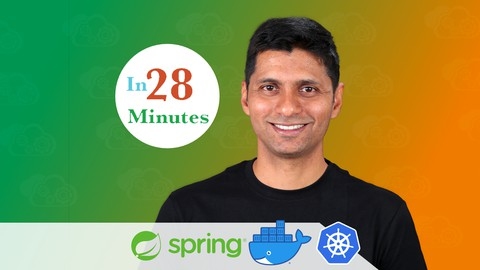


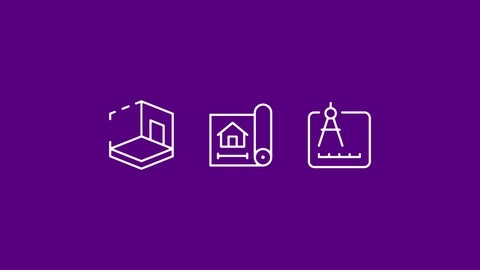


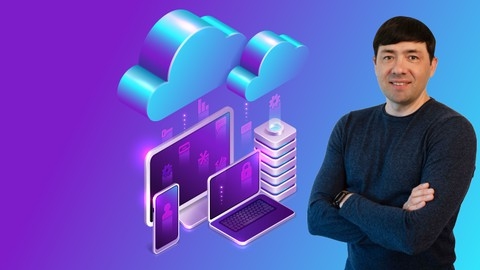

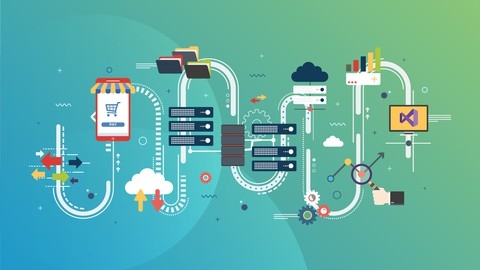
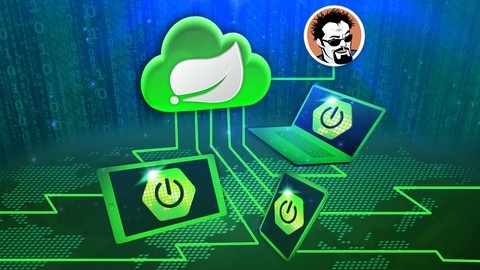
![[NEW] Master Microservices with SpringBoot,Docker,Kubernetes](/img/best-microservices-courses-udemy/3984552_NEWMasterMicroserviceswithSpringBootDockerKubernetes.jpg)